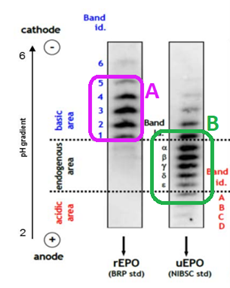Peter Bol and the case of the atypical test
Celebrating too soon?

Peter Bol and his supporters across the globe were quick to celebrate when the Australian Olympian’s provisional suspension for a positive anti-doping test was lifted in the middle of February. Testing of Bol’s B-sample had failed to confirm the result of his A-sample, and he was keen to put the experience behind him.
However, while Bol took to social media claiming he had been exonerated, Sport Integrity Australia (SIA) was clear that the result – reported as an Atypical Finding or ATF – was not the same as a negative test.
So, what is an Atypical Finding? What happens next? And what does this mean for Peter Bol and his running career?
EPO and Atypical Findings
Sport Integrity Australia tested Bol in October 2022, the same month he won the 2022 Peter Norman Humanitarian of the Year award for philanthropy. His test was positive for erythropoietin (EPO), a substance that increases red blood cells, improving oxygenation of the muscles and increasing endurance.
In Bol’s case it was recombinant, or synthetic, EPO (rEPO). Synthetic EPO is made in a lab and is different to the EPO that occurs naturally in the body, known as uEPO. The difference is evident in anti-doping testing.

Figure shows sample positive test results for rEPO and uEPO.
Tests for EPO focus on the substance’s pH value. A positive finding for synthetic EPO would show three consecutive bands in the ‘basic’ pH area. A test showing natural EPO would show bands in the ‘endogenous’ pH area. Positive results for other EPO types show above and below the basic and endogenous areas.
Bol’s B-sample result was inconclusive, which means it’s neither positive nor negative. Inconclusive results are reported by the lab as Atypical Findings to indicate that further investigation is required.
There are a number of reasons that a test for EPO could come back as inconclusive. It could be sample degradation, or a rare genetic variation such as the c.577del variant, which is known to create interfering bands on the test result.
What happens next?
The World Anti-Doping Agency’s Technical Document for EPO sets out the EPO test procedure in painstaking scientific detail. DNA analysis can be used to check if an athlete has the genetic variation EPO variant c.577del, which is detected through a blood sample. The document also requires a second opinion from a member of the WADA EPO Working Group for Atypical and Adverse Analytical Findings.
We don’t know when the results of Sport Integrity Australia’s follow-up investigation will be complete. WADA’s technical document shows more routes to an adverse analytical finding (a positive test) than to a negative result in cases of synthetic EPO. Bol and his fans may have celebrated too soon, as the process of determining whether anti-doping rules were broken is far from complete.
Peter Bol image (c) Matthias Reiss
